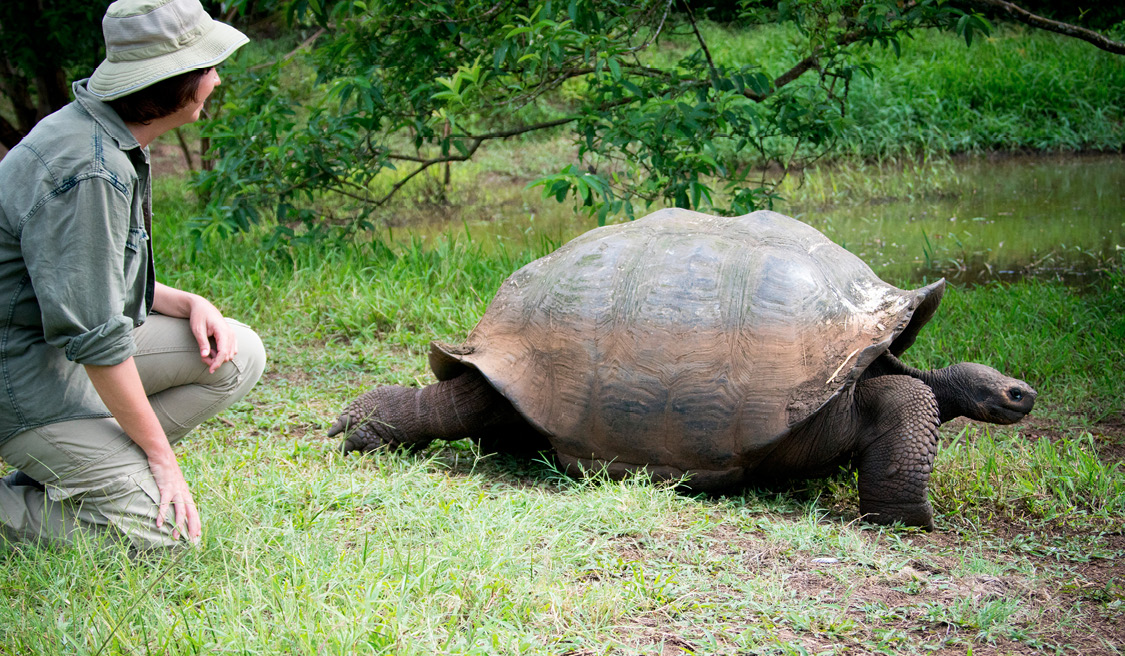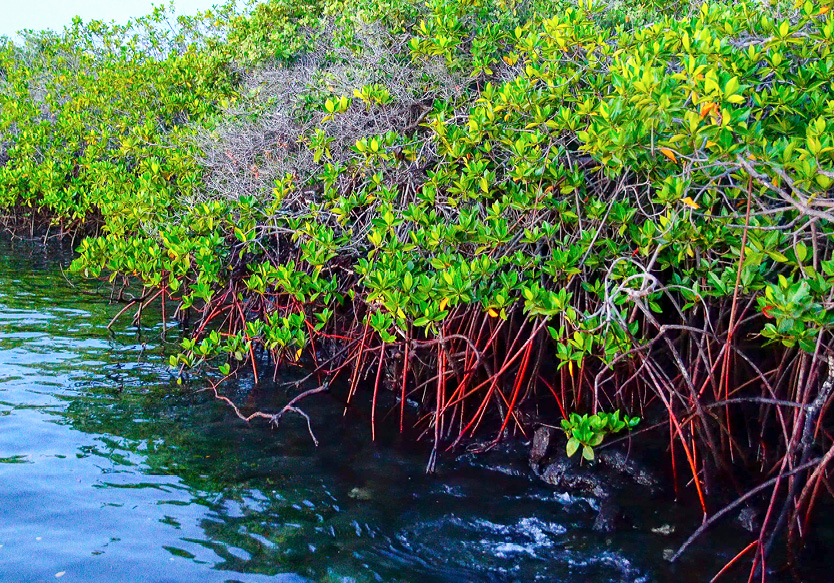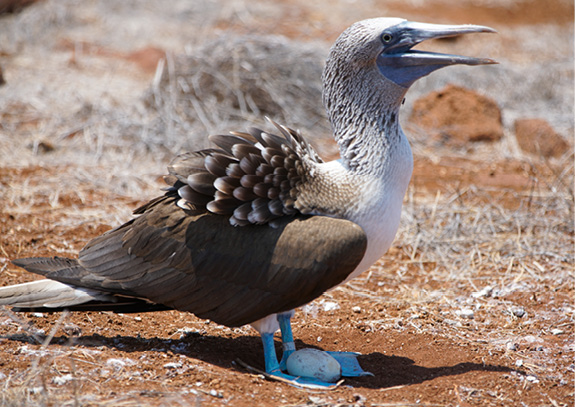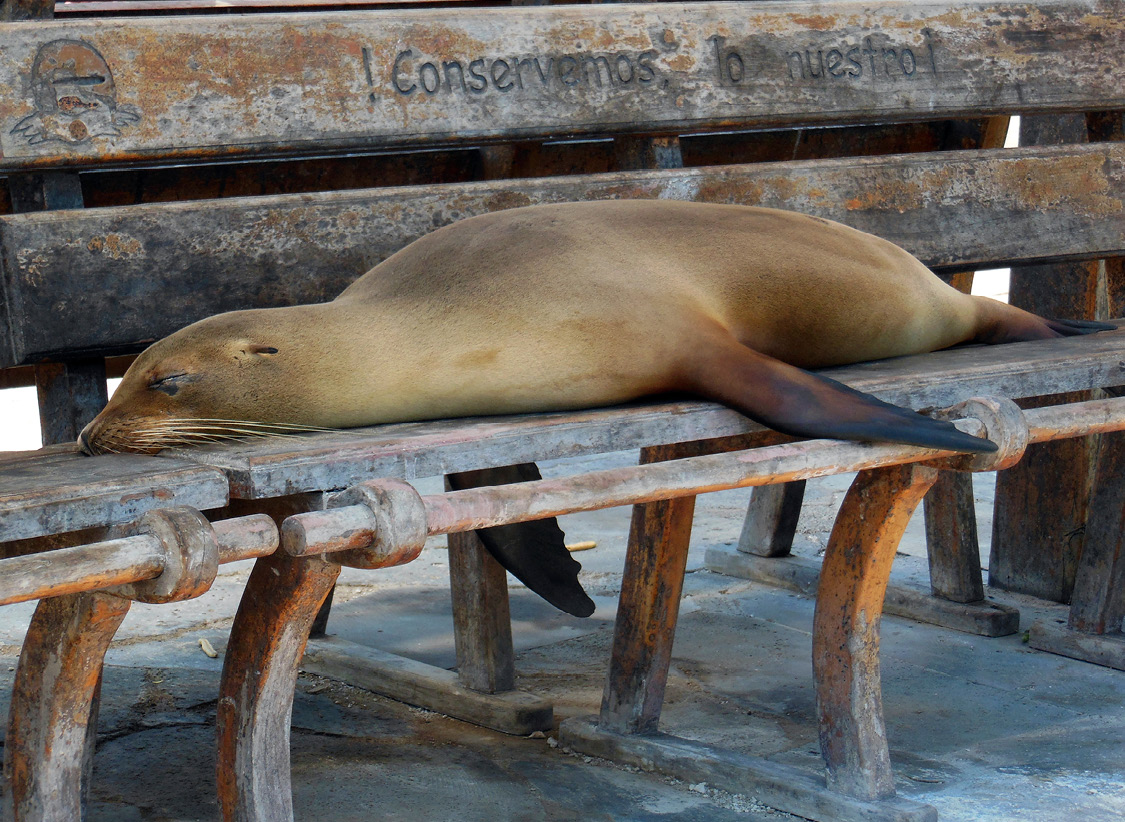©Copyright 2018 GEOSCIENCE RESEARCH INSTITUTE
11060 Campus Street • Loma Linda, California 92350 • 909-558-4548

A collection of photos showing the terrain, fauna, and flora of the Galápagos Islands (Ecuador).
All photos in this gallery are the property of the Geoscience Research Institute, and copyright rules apply. Noncommercial use is authorized with attribution as follows:
“Image copyright © Geoscience Research Institute, www.grisda.org. Used with permission."
Contact GRI for inquiries and further permissions.
Marine iguana
The Galapagos marine iguana ( Amblyrhynchus cristatus) is a reptile that is found exclusively on these islands and that feeds on algae. It can stay submerged up to a depth of 9 m, although it usually feeds in the intertidal coastal zone.
Chelonoidis
The giant Galapagos tortoise ( Chelonoidis nigra) is the largest land turtle in the world. These vegetarian giants can reach a meter and a half in length and weigh more than 400 kilos.
Conolophus
The land iguana is a species of lizard of the family Iguanidae, and one of the three species of the genus Conolophus. It is endemic to the Galapagos Islands. During the day, these animals spend many hours sunbathing on hot rocks and at night they take refuge in holes in the ground to conserve heat. They are fundamentally herbivorous, although sometimes they feed on insects, centipedes and decaying corpses.
Chelonia
Green Turtle (Chelonia mydas). Adults individuals measure up to 1.5 meters in length and weigh more than 230 kg. This is the only herbivorous species among sea turtles and feeds on seagrasses and algae. Due to this diet, its fat reserves are green, explaining the reason for its name.
Cactus finch
The Galapagos finches are several species of passerine birds that Charles Darwin collected for the first time during the second voyage of the Beagle. These birds are colored and weigh between 8 and 38 grams. The most important differences between different species are the size and shape of their peaks, which are related to different eating habits
Scalesia
Forest of Scalesia. Scalesia is a genus of plants in the Asteraceae family that is endemic to the Galápagos Islands.
Mangroves
In the Galapagos Islands there are several areas with dense mangroves. Mangroves and beach bells disperse thanks to their seeds dragged by ocean currents.
Blue-footed booby
The Galapagos Islands are habitat for numerous seabirds, which nest in large numbers on some islands and islets.
Amblyrhynchus
The Galapagos sea iguana ( Amblyrhynchus cristatus) is endemic to these islands and has the ability to feed underwater on algae.
Mockingbird
The Galápagos mockingbirds is an insectivorous bird, about 25 cm in size, with brown back, white belly, long tail, and straight, long and thin beak.
Gull
The bifurcated tail gull ( Creagrus furcatus) is completely nocturnal and thus avoids the attacks of the frigates, which fly during the day.
Frigate
One of the most characteristic Galápagos seabird is the frigatebird, an elegant black bird with a wingspan of more than a meter, capable of performing the most incredible aerial maneuvers.
Sierra Negra crater
Caldera of the Sierra Negra volcano, in the Isabela Island, 7 km wide and 10 km long
Penguin
The Galapagos penguin (Spheniscus mendiculus) is the only penguin that lives in Ecuador. Although the species is endemic to the islands, the Galapagos penguins are morphologically similar to the Humboldt penguins, which breed in the coasts of Chile and Peru, and to the Magellanic penguins, typical of the southern tip of South America.
Sea lion
There are two species of otariids in the Galapagos Islands, both endemic. Galapagos fur seals (Arctocephalus galapagoensis) are found mainly on the western shores of the Isabela and Fernandina Islands, so they are more difficult to see, but the Galapagos sea lions (Zalophus wollebaeki) are very abundant.
Microlophus albemarlensis
Galapagos lava lizard (Microlophus albemarlensis). These lizards are native to South America. There are about twenty recognized species, and six of them are endemic to the Galápagos Islands.
Candelabra-cactus
Candelabra Cactus. The flowers of this plant provide food for a species of Galapagos finches.
Opuntia
Opuntia Cactus: Opuntia is a genus that includes 200 species of cacti, all with broad, flat leaves. Of those species, only six grow in the Galapagos: Opuntia echios, Opuntia galapageia, Opuntia helleri, Opuntia insularis, Opuntia saxicola, Opuntia megasperma.
Lava
Lava tunnel on Isabela Island. As lava flows, it can form lava tunnels up to several kilometers long. The surface of the lava cools rapidly and forms a crust that protects the lava that continues to flow beneath. If the lava under the hardened crust eventually drains out, it can leave a hollow tunnel behind.
Volcanic cone
View of Bartolomé Island, where a parasitic cone is observed on the right side of the photograph. Notice the reddish colors from weathering of the volcanic rocks.




















